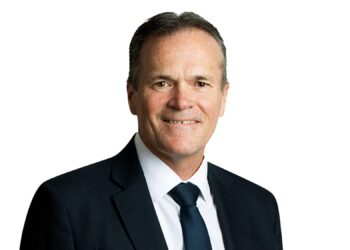While the Magnificent Seven have been a runaway success – they drove almost two-thirds of the S&P 500’s 24% return in 2023 – our view is that the largest seven companies in Australia could anchor our market in the medium term. So, how can investors diversify their portfolios and make better returns without turning to more volatile small caps or offshore markets? The Ex-20 might be the answer.
By Dion Hershan, Head of Australian Equities at Yarra Capital Management
The Australian market’s overall earnings landscape continues to remain subdued, reflecting a second consecutive year of reduced earnings per share post the COVID-era peak.
This is not the ideal environment for investors interested in future growth. Why?
Well firstly, bank earnings peaked in 2017 and are anticipated to decline by 2% in FY24 due to competitive pressures and escalating costs, with a further projected 3% decrease in earnings per share by FY25.
At the same time, iron ore prices remain volatile, with current spot prices (US$105/t) remaining above the cost curve amidst a weakened demand outlook. This is particularly true in China where demand for iron ore is stagnating due to a housing sector downturn and an economy which is showing clear signs of maturity and saturation.
While the ‘magnificent seven’ in the US constitute 30% of the S&P 500, driving strong earnings growth and driving the index to new highs. By comparison, the Australian stock market is dominated by four banks and three mining companies, which combined represent 35% of the ASX 200. This concentration is more pronounced than in the S&P 500. These companies are projected to offer -5.2% earnings growth in FY24, potentially earning them the moniker the ‘mundane seven’.
Banks account for 21% of the ASX 200 benchmark, and iron ore mining companies BHP, Rio Tinto and Fortescue Metals are 14%. For every client dollar added to the ASX200, roughly one-third in a benchmark-aware or passive fund goes into a bank or mining company, hardly a diversified or optimal use of investors’ capital.
So, how can investors think differently and harness the fertile opportunities outside the top 20? The answer might lie in the ASX300 Ex-20 index.
In contrast to the stagnant growth of the ASX20, the Ex-20 has forecast earnings growth of 6.8% over the next three years. It offers exposure to high-growth businesses, future-facing commodities, and exporters, offering what the top 20 lacks in tech firms and growth.
A further consideration is liquidity and diversification. In this regard, the Ex-20 also offers a compelling combination, being more diverse than the ASX200, while offering greater liquidity, better value and less volatility than small caps.
For example, resources and financials account for 50.1% of the ASX200 vs. 28.4% of the Ex-20. The top seven ASX200 stocks are 34.9% of the benchmark versus 14% outside the ASX20. The greater index diversification means a higher active share opportunity.
A less obvious path to future growth
Now, let’s look further into how the Ex-20 is a play for future growth with plenty of value to be found.
Once you venture into mid-caps, you have a wealth of companies to choose from with proven business models and significant growth potential. In contrast to the ASX20, which often exhibit mature and GDP-like return profiles, mid-cap companies present more compelling characteristics. Mid-caps are not reliant solely on Australia’s growth trajectory. Instead, they might possess a small market share but are rapidly expanding, or they could be Australian businesses with a global market outlook, actively expanding their presence offshore. This dynamic landscape underscores the appeal and diversity offered by mid-cap companies, making them attractive options for investors seeking innovative growth opportunities beyond the low-growth ASX20.
While the top 20 companies dominate the ASX200, representing more than 60% of total market capitalisation, they also symbolise yesterday’s heroes. Within the ASX20, only one stock, CSL, is forecast to deliver 10% revenue growth in FY24. By contrast, there are 56 companies in the Ex-20 with that growth projection, spread across sectors including technology, new media, and battery minerals.
Within the metals and mining and financials sectors, the Ex-20 is characterised by sub-sectors that offer a more compelling outlook, with minimal exposure to bulk commodities like iron ore and coal. Specifically, base metals (including lithium and rare earths) account for 7.6% of the Ex-20 benchmark, with their outlook driven by long-term structural demand growth as essential inputs for decarbonisation.
Ex-20 is also a less efficient part of the market.
The top 20 stocks form a well-researched and efficient cohort. The top company in the ASX20 is BHP, with 29 analysts covering the stock, while QBE, ranked 21st, is covered by 14 analysts. There are 18 sell-side analysts on average who cover the ASX20, versus only 10 covering the 280 companies in the ASX300 Ex-20. This means there is more opportunity to find inefficiencies and generate alpha.
To demonstrate where value can be found, let’s look at some examples of our Ex-20 stock picks.
CAR Group (formerly Carsales) has seen 14% compound annual growth rate for the past few years. It is compelling because it has a strong runway to lift yields across key regions and products, is well-positioned to benefit from car dealerships, and has excellent product innovation.
Meanwhile, PEXA Group operates the leading digital property exchange platform in Australia, serving as the dominant player in the industry with an infrastructure-style business model leveraged to property volumes and inflation. The returns and outlook for the Australian business are attractive, indicating that the division is worth significantly more than the current share price.
These are a couple of our own conviction holdings which sit in the Ex-20, which have helped us lead our own fund, the Yarra Ex-20 Australian Equities Fund, to deliver one-year total net returns of 14.50% as at 31 March 2024.
The Australian equity market poses a real challenge for investors due to industry concentration, declining dividend yields, and valuations sitting well above long-term averages. In this environment, simply owning the broader market is unlikely to deliver the best outcome.
Therefore, it’s worth looking for less obvious paths – areas of the market that are less researched (and consequently more inefficient) – with strong business models and pricing power that are more likely to yield outsized returns.
Lastly, make sure you pick a manager who can capitalise on this opportunity through well-researched and insightful active positions.
Dion Hershan is Executive Chairman and Head of Australian Equities at Yarra Capital Management. He is a Portfolio Manager responsible for leading the Australian Equities team.
The Yarra Ex-20 Australian Equities Fund provides investors with access to a diverse, balanced investment universe with lower stock and sector concentration.










